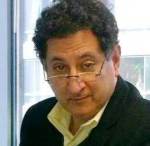Updated
Business Brief: Morocco Builds Momentum at COP22 for Green Bonds; Innovates CSP for Solar Energy Production; Gains Accolades for Security Environment – Jean R. AbiNader
Jean R. AbiNader, MATIC
November 17, 2016
COP22 is generating global headlines, and Morocco is garnering its share for hosting a special meeting for African countries and launching a financing mechanism for energy on the continent. As its solar power project continues to expand, other countries are getting on board technology used by the kingdom. And finally, Morocco gets high marks from international organization for its stable domestic environment.
Green Bonds Make News at COP22. The issuance of Green Bonds is a priority for Morocco to advance climate change mitigation projects worldwide with an emphasis on Africa. The King has pledged support for these programs, and two major announcements were made at the beginning of COP22 in Marrakech. The first was a statement from the World Bank, which launched green bonds in 2008, that it was starting a new green bond initiative with the support of Morocco’s central bank. Green bonds are credit vehicles backed by the Bank’s AAA rating that support country programs in efforts related to “controlling carbon emissions, promoting climate resilient growth,” and work to “mitigate change or help affected people adapt to it.”
The Governor of the Central Bank, Abdellatif Jouahri noted that “The investment [by the Central Bank] will support sustainable development projects financed by the World Bank including in countries in Africa.” The 3-year $100 million bonds have a fixed rate of return, and the lead manager is Credit Agricole CIB. World Bank Vice President and Treasurer Arunma Oten noted that “This investment sends a powerful message to the global investor and climate policy community about Morocco’s commitment to climate finance… [Morocco] is making an investment in the global transition to a greener planet.”
Since the World Bank’s first green bond launched in 2008, it has issued 128 green bonds in 18 currencies, totaling approximately USD 9.7 billion equivalent.
On the same day, there was a Reuters story that the Moroccan Agency for Solar Energy (MASEN) had issued its first domestic green bond to help finance the country’s solar power projects. The $118 million bond issue will “help to fund three schemes that form part of the NOOR PV 1 solar power project. The schemes are to be developed in Laayoune, Boujdour and Ouarzazate with total capacity of at least 170 megawatts. Green bonds are a fixed-income security designed to raise capital for low-carbon or clean energy investments.”
The Sun Shines on Moroccan Solar Project. Another energy story from the World Bank touted the ground-breaking technology that has received a big boost from its adoption by Morocco for the Noor-1 project. The article points out that oftentimes projects are reluctant to try new technologies until they are proven to be reliable and efficient. “That was the case with Concentrated Solar Power (CSP) in the Middle East and North Africa (MENA) region, until Morocco launched its bold program to invest in the technology.” Now Morocco is an example to the region of the value of CSP, as the operating and production costs of one kilowatt of power have decreased by two-thirds since the launching of the project. In fact, the UAE has announced that its planned 179-megawatt facility will use CSP technology.
Morocco Moves to Top of Security and Safety Rating. According to a story in Morocco World News, the 2016 Legatum Prosperity Index measures the quality of life using a variety of indices and was especially positive about how Morocco has maintained equilibrium while other countries in the MENA are experiencing challenges. The Index mentions that “This stability has enabled a modest rise in prosperity, predominantly the result of the stability itself improving performance in Safety & Security and enabling ongoing economic progress. Satisfaction with living standards has risen from 57 to 75 percent in the past decade alone.”
Morocco received the highest ranking North Africa, and, according to the Morocco World News story, “The country also scored well on economic quality and natural environment ratings – which is fitting as the report comes at the beginning of COP22 proceeding in Marrakesh.”
